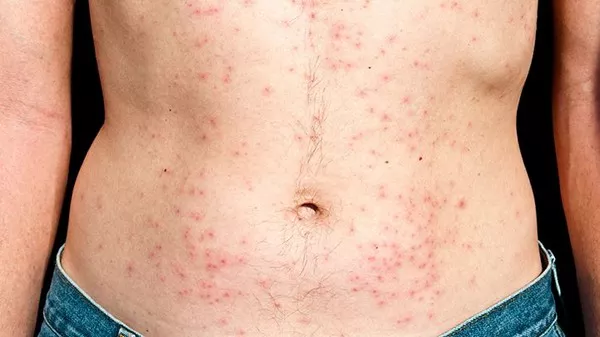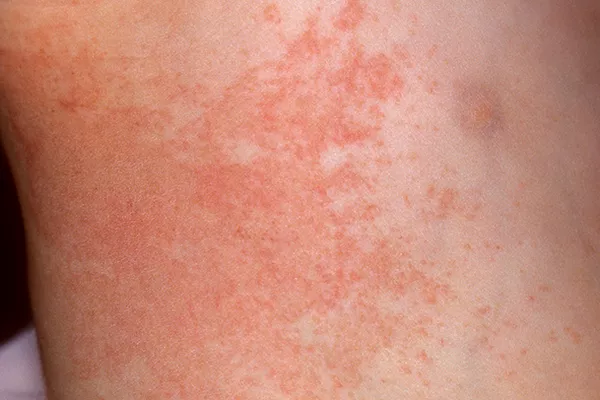Hives, also known as urticaria, are a common skin condition characterized by raised, red, itchy welts on the skin. In most cases, hives are not accompanied by bruising. However, when hives do bruise, it can be concerning and may indicate underlying issues that require investigation. This article aims to delve into the reasons behind hives that bruise, exploring potential causes, associated conditions, and strategies for management.
What are Hives?
Hives typically appear suddenly as raised, swollen areas on the skin that are usually red or flesh-colored. They can vary in size and shape, often resembling mosquito bites or nettle stings. Hives are caused by the release of histamine and other chemicals from specialized cells in the skin, leading to a localized inflammatory response. Common triggers for hives include allergies, infections, medications, and stress.
Understanding Hives with Bruising
While hives are commonly red and raised, the presence of bruising alongside hives suggests a deeper involvement of blood vessels or clotting factors. Bruising occurs when small blood vessels beneath the skin break and leak blood into the surrounding tissue. When hives become bruised, it may point towards certain underlying conditions or factors that exacerbate the skin’s response.
Potential Causes of Hives that Bruise
1. Vasculitis: This is a condition characterized by inflammation of blood vessels, which can affect the skin. In vasculitic hives, the blood vessels become inflamed and fragile, leading to both hives and bruising.
2. Coagulation Disorders: Some individuals with underlying blood clotting disorders, such as thrombocytopenia or von Willebrand disease, may experience hives accompanied by bruising due to abnormal bleeding under the skin.
3. Autoimmune Conditions: Certain autoimmune diseases, like lupus or rheumatoid arthritis, can cause skin manifestations including hives and increased bruising due to immune-mediated inflammation and vascular changes.
4. Medication Reactions: Rarely, certain medications can induce a severe allergic reaction known as drug-induced vasculitis, presenting with hives that may become bruised.
5. Underlying Health Conditions: Chronic diseases affecting blood vessels or clotting mechanisms, such as liver disease or certain cancers, can predispose individuals to hives that bruise.
Investigating Hives with Bruising
When hives are accompanied by bruising, it is important to seek medical evaluation to identify potential underlying causes. A thorough history, physical examination, and possibly laboratory tests or skin biopsies may be needed to determine the underlying condition. Your healthcare provider will likely inquire about recent illnesses, medication use, family history, and other pertinent factors.
Management and Treatment
The treatment approach for hives that bruise depends on identifying and addressing the underlying cause:
1. Identify Triggers: Determine if there are specific triggers (e.g., foods, medications, infections) that are contributing to the hives. Avoidance of identified triggers can be crucial.
2. Medications: Antihistamines are commonly used to relieve itching and help control hives. In more severe cases or those related to autoimmune conditions, immunosuppressive medications may be necessary.
3. Addressing Underlying Conditions: Treatment of underlying diseases such as vasculitis or coagulation disorders will involve specific therapies aimed at managing the primary condition.
4. Lifestyle Modifications: Stress reduction techniques, maintaining a healthy diet, and appropriate skincare can also help manage hives and prevent exacerbations.
When to Seek Medical Attention
If you experience hives that are accompanied by bruising or other concerning symptoms such as difficulty breathing, swelling of the face or throat, or dizziness, seek immediate medical attention. These signs could indicate a severe allergic reaction or other urgent medical condition.
Conclusion
Hives that bruise can be a manifestation of underlying systemic conditions requiring medical attention. While hives are typically benign and self-limiting, the addition of bruising warrants a thorough evaluation to identify and treat any potential underlying causes. If you are experiencing hives with bruising, consult with a healthcare professional for proper diagnosis and management tailored to your specific needs. Early intervention can lead to effective control of symptoms and prevention of complications associated with this skin condition.
Related Topics:
Why Do I Break Out in Hives When I’m Hot?

























